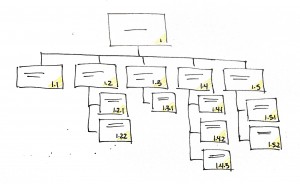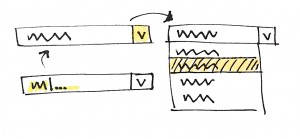Information Architecture vs. Interaction Design
I am often surprised to find that many practitioners do not feel there is much difference between Information Architecture (IA) and Interaction Design (IxD) as I find the differences to be rather distinctive. I feel both deserve unique recognition as both have their own sets of skills and approaches, which cover different aspects of the user experience.
Without distinction in the industry, I worry that the mastery level of both specialties runs the risk of becoming lost to a single intertwined role that doesn’t explore either side as extensively as possible, resulting in reduced value across the board. While I strongly encourage cross training and knowledge of all aspects of the field I also believe it is important to find your niche and I believe both IA and IxD are entirely different specialties worth exploring.
A Google search of the difference between two roles didn’t provide much in the way of confidence for the respect of the distinctions, therefore I have decided to take a moment to try and illustrate my opinion on the differences, with the hope of sparking a conversation around these unique but related roles.
Information Architecture
When I think Information Architecture I think organization, literally the architecture of information. I think of Peter Morville’s seminal book Information Architecture for the World Wide Web.
…chapters on organization, labeling, navigation, and searching; and a new chapter on thesauri, controlled vocabularies and metadata will help you understand the interconnectedness of these systems. The authors have expanded the methodology chapters to include a more interdisciplinary collection of tools and techniques. They’ve also complemented the top-down strategies of the first edition with bottom-up approaches that enable distributed, emergent solutions. – Book Description
An Information Architect is like the Librarian for your website. Just as you could enter any library anywhere in the world and with relative ease find the exact information you are looking for, the IA is responsible for making this possible in interactive software and websites. It’s about finding useful and relevant information quickly as well as maintaining that information over time. This includes things like your sitemap, the structure of your content, the hierarchy of your content paths, the inventory of each of your pages, the taxonomy and thesaurus, and the metadata that describes it all.

Interaction Design
When I think IxD I think behavior. How does a user interact with the interface to carry out their goal? What control should be used, how would a user manipulate it, and how will the interface react to that manipulation? Do the interactions take into account proper affordances, constraints, mappings, and feedback? When thinking about interaction design I think about books like Robert Hoekman’s Designing the Obvious.
Designing the Obvious explores the character traits of great Web applications and uses them as guiding principles of application design so the end result of every project instills customer satisfaction and loyalty. These principles include building only whats necessary, getting users up to speed quickly, preventing and handling errors, and designing for the activity. – Book Description
Interaction designers are like industrial designers in the virtual world. They are concerned with improving the user experience through an interface that provides users with the tools necessary to accomplish their goals in a simple and intuitive way. Related artifacts are task flows, wireframes, prototypes, pattern libraries, annotations, storyboards, scenarios, etc.

Scratching the Surface
While this post just begins to scratch the surface I hope that it starts the conversation in a way that provides meaningful examples of the distinctions between he two specialties. While IxD and IA are only a part of creating a solid user experience I find the other specialties, such as research, visual design, etc to be better defined in the industry and therefore did not see the need to expand on them here. What skill sets do you have, and how do you define your role in the industry?
Totally agree, but I have a question, which one of them is responsible of wireframing ?
I would say both, but in different ways. The interaction designer probably does more of the wireframes in a classical UX sense, adding annotations around how things react, how you interact, and how the page response.
The IA is most likely more concerned with the layout of information, hierarchy of priorities, moving from one page to the next, the navigational path and knowing where you are withing the whole.
I think both roles have many document that help them uncover and present these different goals to their audiences.
I’m looking at a graduate program that is actually called Interaction Design and Information Architecture. From what I understand, you feel they shouldn’t be connected? Would I be better off in a Human Computer Interaction program? Is that again a completely different expertise? Also, do you think either of these programs would lead to a job where I could work from home? I’m not so sure if there are any companies near where I live that will be looking to hire people in these areas. Thanks!